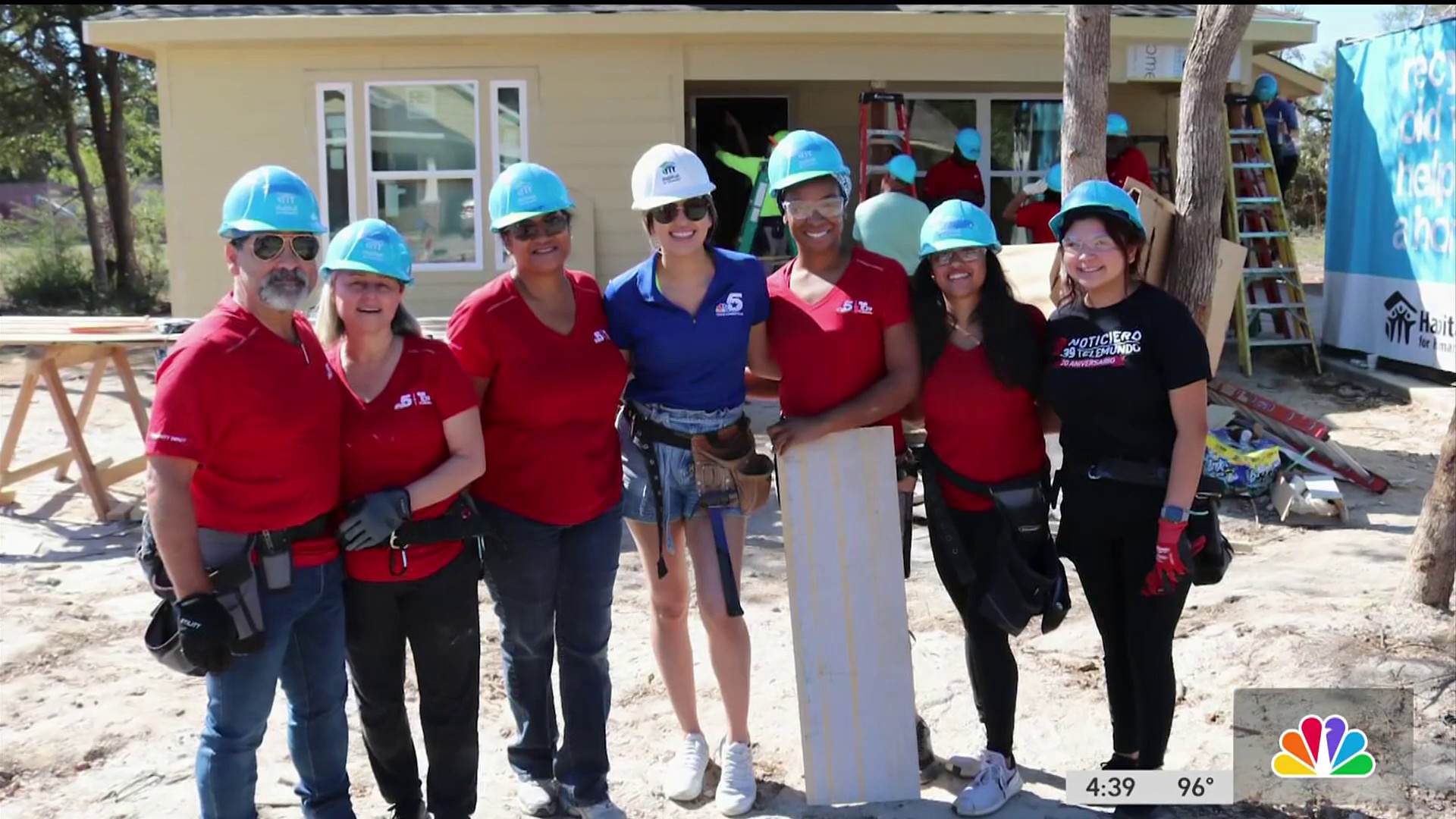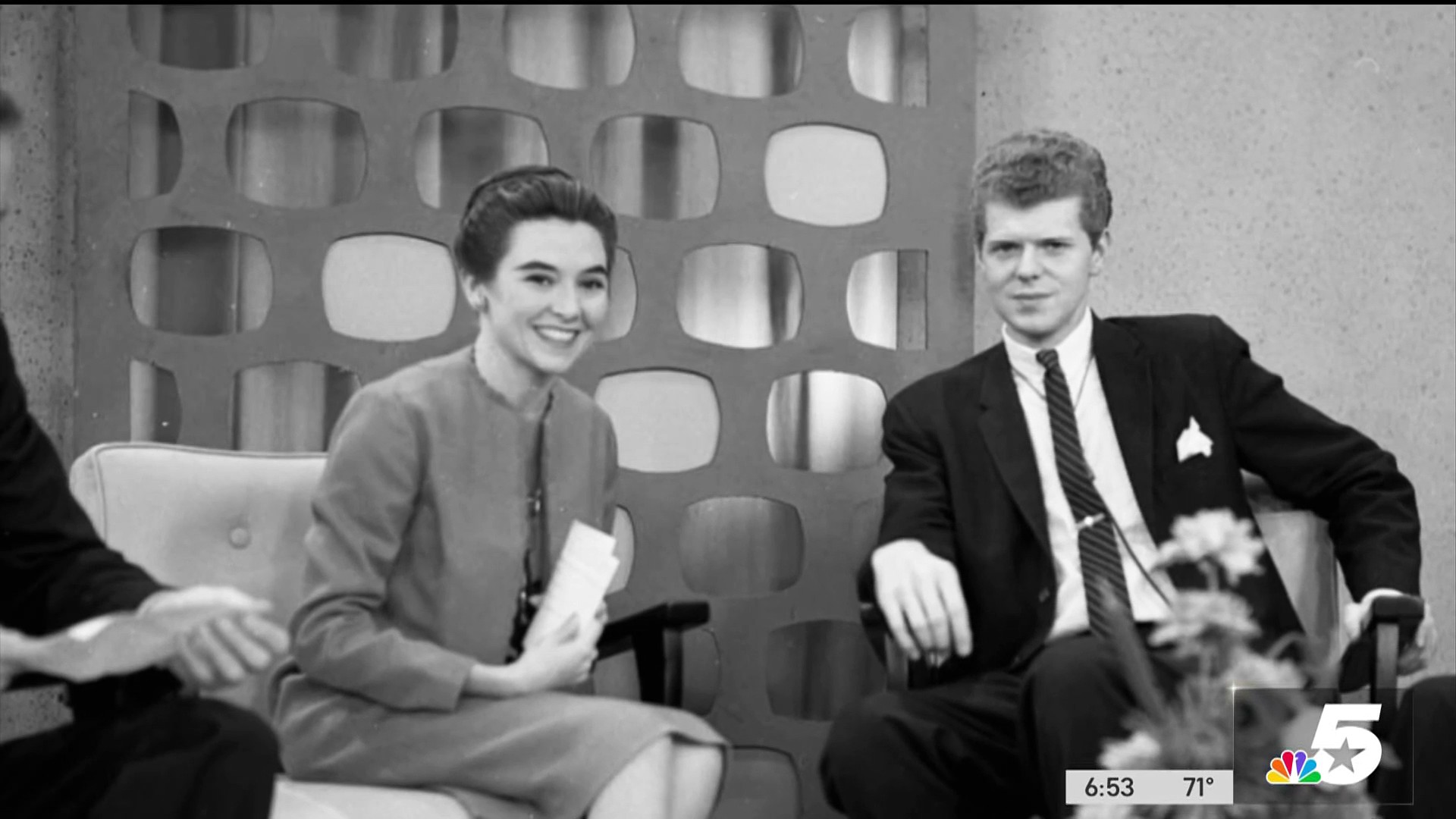NBC 5 was founded in September 1948 as WBAP-TV, Texas’ first television station. In 2023, we celebrate 75 years of local broadcasting.
It had been less than a year since the end of World War II, and the nation was still gearing toward economic recovery. Amon G. Carter, Sr., the founding publisher of the Fort Worth Star-Telegram and a pioneer in newspaper publishing, decided it was time to take positive action to bring television to the Southwest. For years, the newspaper had blanketed its vast coverage area in West Texas with headlines, and WBAP Radio had given the area a voice. Now it was time for these communications pioneers to begin sending out a picture, as well.
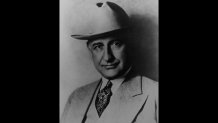
The application for a construction permit for a television station was actually filed with the FCC on April 17, 1946. Two years and five months later, the first test pattern for the station that would begin its broadcasting life as WBAP-TV was transmitted. The fledgling station would be the first station south of St. Louis, east of Los Angeles and west of Richmond, Va. Like WBAP radio, WBAP-TV was affiliated with the National Broadcasting Company.
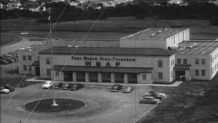
The original plans called for WBAP-TV to sign on the air at 7 p.m. on Wednesday, September 29, 1948. But a presidential visit to Fort Worth caused those plans to change. President Harry S. Truman announced a whistle-stop campaign trip to the city on September 27, WBAP launched two days early in order to bring a television broadcast of the event to North Texans.
This premiere broadcast gave viewers an on-the-spot look at Truman's visit for 49 minutes. The first image was a crowd shot taken from just west of the speaker's platform at the Texas & Pacific terminal building in the south part of downtown Fort Worth.
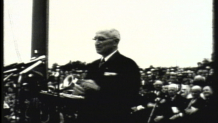
September 29, 1948, marked the formal opening of the station, with speeches by Amon Carter and Harold Hough, the station's first general manager. The program included a dedication film from NBC, a western variety show by The Flying X Ranch Boys, and the feature film The Scarlet Pimpernel with Leslie Howard and Merle Oberon.
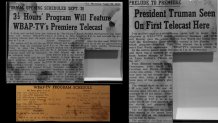
The first reviews of the station were encouraging. Fort Worth Press reporter Jack Gordon wrote, "A part of Fort Worth's inaugural television show last night looked like our first roll of home movie film. But a good deal more of it was excellent – enough so to convince the stubbornest critic that television is here to stay."
A local newscast, the first for Texas and the Southwest, rounded out the evening's programming. The Texas News soon became the watchword for viewers throughout North Texas. After its first full year of operation, the Texas News was named the nation's best by the Radio/Television News Director's Association. The station went on to win this award six more times.
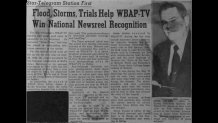
From the beginning, WBAP-TV established a pattern of historic firsts in broadcasting. The same first weekend, TV cameras brought sports to viewers directly from the 50-yard line. Within six months, the television schedule had increased from 15 hours each week to between 35 and 40 hours a week, with seven days a week of programming.
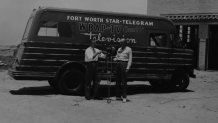
Programs from both the NBC and ABC networks were aired by Channel 5 in the early days by "kinescope." Shows were filmed from a picture tube during their original showing and then shipped to network affiliates for showing, with about a week's delay. Local programming included such entertaining shows as the Saturday Night Barn Dance, See-Saw Zoo, The Bobby Peters Show, and a children's show featuring Kitty Adkins. Network viewing for children included such favorites as The Lone Ranger and Howdy Doody.
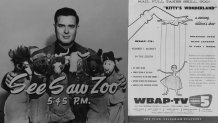
By the time the station celebrated its first birthday, there were an estimated 16,000 television sets in the Dallas-Fort Worth area. On October 31, 1949, a team of three WBAP meteorologists created the Southwest's first professional weather reporting program, Weather Telefacts with Harold Taft.

On January 1, 1953, NBC and WBAP televised the Cotton Bowl live from Dallas, followed by the Rose Bowl game.
With the continuing foresight that grew to be the hallmark of the station, WBAP-TV optimistically placed an order in the fall of 1949 for RCA color television equipment, to be delivered when ready. On April 9, 1954, WBAP-TV became the only Texas television station broadcasting color programs from the NBC television network. On May 15, WBAP staged a three-hour studio color telecast. General David Sarnoff, chairman of the board of Radio Corporation of America (RCA), and Amon Carter, Sr., threw the switch to inaugurate the first local live colorcast in Texas.

The first color tape recorder in Texas was in installed by WBAP-TV in October 1959. The new equipment had the ability to record a 90-minute segment of programming and play it back in less than five minutes. Unlike a film production, the videotape segment could be recorded in its entirety. If there was an error, the tape was simply rewound and the scene re-shot. The new flexibility allowed for an interview or a commercial to be recorded and then broadcast at a later time. Plans were immediately made to record more color commercials and special shows in both color and black and white.
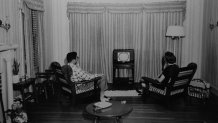
Since WBAP-TV became the first television station in Texas, numerous technological "miracles" had occurred. Television sets themselves had smaller cabinets and larger screens, and many families had more than one television set. "Portables" had been introduced and the market for color receivers was growing daily. By 1968, over 18 hours of programming were broadcast each day, providing a full scope of entertainment, information, news and weather coverage for Channel 5 viewers.
In 1964, WBAP-TV News received the top national Sigma Delta Chi television news award and bronze medallion for its coverage of President Kennedy's visit to Texas in 1963. Before the year was out, the station's coverage of the assassination was selected for the first honors by both the Dallas Press Club and the RTNDA, giving the station a clean sweep of major television news awards during 1964.
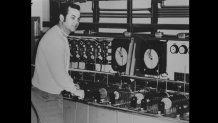
The station set another landmark in 1966, becoming the first station in Texas to feature all-color news film, on June 16. Four years later, in February 1970, WBAP News began producing Texas '70s, a monthly 30-minute news magazine that was the first local TV news magazine. Reporters and cameramen traveled the entire Lone Star State to film segments for the program.
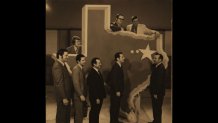
A landmark day in WBAP history was made on November 8, 1974. The television station and the newspaper departed from their common roots as institutions founded by Amon G. Carter Sr. when WBAP was sold to LIN Broadcasting and the Star-Telegram was sold to Capital Cities Communications. WBAP-TV became known as KXAS-TV.
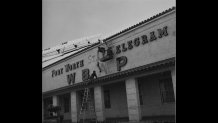
KXAS-TV made broadcast history yet again in 1977, when it aired the first live intercontinental satellite report, from London to Dallas/Fort Worth.
In 1985, Channel 5 viewers benefited again when NBC became the first commercial network to institute stereo casting. In 1989, deaf and hearing-impaired viewers in Dallas/Fort Worth gained additional opportunities to receive important information when Channel 5 became the Lone Star State's first station to debut closed-caption newscasts. The same year, Channel 5 became the state's first station to utilize circular, polarized broadcasting technology to offer viewers clearer pictures and sound.
Weather information has always been a high priority for the station, from the Southwest's first professional weather reporting program, Weather Telefacts, to legendary meteorologist Harold Taft.
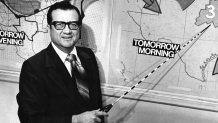
Among numerous innovations, Taft trained "Weather Watchers," volunteers from surrounding counties, who gathered accurate weather data for the most up-to-date information possible. In 1993, KXAS continued as a meteorological pioneer, becoming the first television station in the U.S. to provide a Local Weather Station with 24-hour local updates.
As the nation's computer users became increasingly involved with the Internet, Channel 5 remained in the vanguard, becoming the state's first commercial television station to offer full online computer access in 1995. The station was the first in the Southwest to offer email news delivery service, beginning in 1997. The station's website offers continuously updated news reports along with information on the station's initiatives and biographical information on anchors and other on-air personnel.
NBC 5 was a leader in the development of programming for high-definition television. In 1997, KXAS was the first local station to commit to providing a digital signal, as the transition from analog to High Definition began. The station's inaugural HD broadcast was a live telecast of a Texas Rangers game versus the Chicago White Sox on March 31, 1997. Since then, KXAS has transmitted NBC network programming in High Definition and began offering NBC 5 News in HD on September 7, 2007.
Solidifying its long-term relationship with the network, Channel 5 became an owned and operated station in the spring of 1998, as reflected in its new name: NBC 5.
In late 2013, the station made its first change of address in 65 years. NBC 5 and Telemundo 39 (KXTX-TV) and other NBC operations move into a 75,000-square-foot, state-of-the-art facility in Fort Worth's CentrePort Business Park. The address is a nod to the station's history, 4805 Amon Carter Blvd., captures the year the station went on the air, the channel and it's only appropriate it's on the street named for the man who started it all. That same year, NBC 5 donated three decades of historical news film to the University of North Texas libraries. The NBC 5 film library appears in The Portal to Texas History.
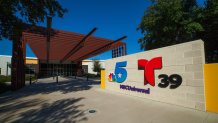

In 2016, NBC 5 debuted the most powerful TV radar in North Texas, the S-Band radar offering real-time data.
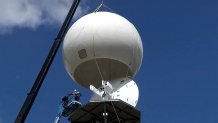
In 2018, NBC 5 announced Ranger Vision, technology capable of overlaying geographical elements onto live video from Texas Sky Ranger, including street names, building names and points of interest. Also in 2018, Texas Lightning Truck was added to NBC 5's arsenal of mobile weather tools in what became known as the Texas Storm Fleet.
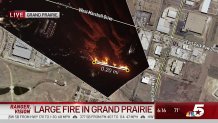
NBC 5 teamed up with the University of North Texas to make the station's video treasure chest available to all through The Portal to Texas History.
During the station's 70th anniversary, we documented the monumental work being done at The University of North Texas Libraries to catalog historic broadcast footage, scripts, advertisements, still photography and research files from WBAP-TV and KXAS-TV dating from 1950 through 2012.
In September 2023, NBC 5 celebrates 75 years in broadcasting.

